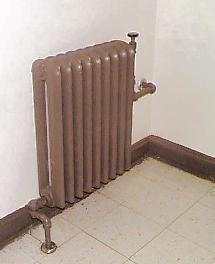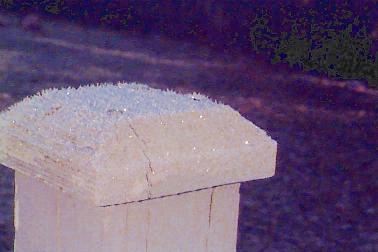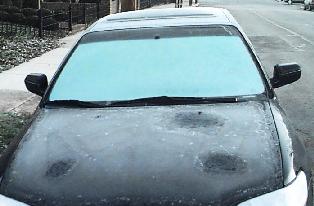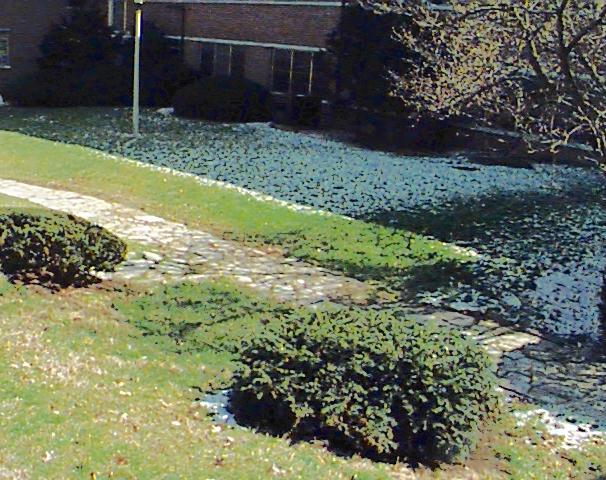 This is a steam radiator -- once common,
now rapidly becoming museum pieces.
What does it do? Why does it have the funny shape?
This is a steam radiator -- once common,
now rapidly becoming museum pieces.
What does it do? Why does it have the funny shape?
Convection and radiation are not as obvious to us as is conduction, as a way to move thermal energy around. Convection involves the motion of air (which we tend to ignore), and radiation involves invisible light (which we can't see). But they can play important roles. By study of convection and radiation we will learn how to answer these questions:
 This is a steam radiator -- once common,
now rapidly becoming museum pieces.
What does it do? Why does it have the funny shape?
This is a steam radiator -- once common,
now rapidly becoming museum pieces.
What does it do? Why does it have the funny shape?
 |

|
| After a clear night, fence posts and car tops are decorated with ice crystals, and the grass is frosty. Why are these places cooler than elsewhere? | |
|---|---|
| Light carries energy. The grass in this photo started with a uniform thin cover of snow before sunrise. The snow in the areas illuminated by the sun quickly melted, while areas in shade are still snowy. These "snow shadows" identify the regions of this yard that sunlight has not yet reached. They have not yet received enough energy to melt the snow. |  |
It is an interesting fact about the atmosphere, that as you move upwards, it gets colder -- until about 20 miles up, when it starts to get warmer again. To be cold when everything about you is warmer is surprising! But the explanation is that the atmosphere is transparent to visible light, and much less transparent to both ultraviolet and infrared light. So the top of the atmosphere is heated by absorbing the UV (there is so little matter up there that it doesn't take much!). The bottom of the atmosphere is heated when the visible light is absorbed by stuff on the ground -- rocks, trees, parking lots... . But the region in between has very little energy coming in, and is able to cool itself by radiation of infrared light (it is a rule that to be able to radiate light of a given color you must also be able to absorb it -- so it is important that the stratosphere is opaque to infrared).
The unit on convection and radiation